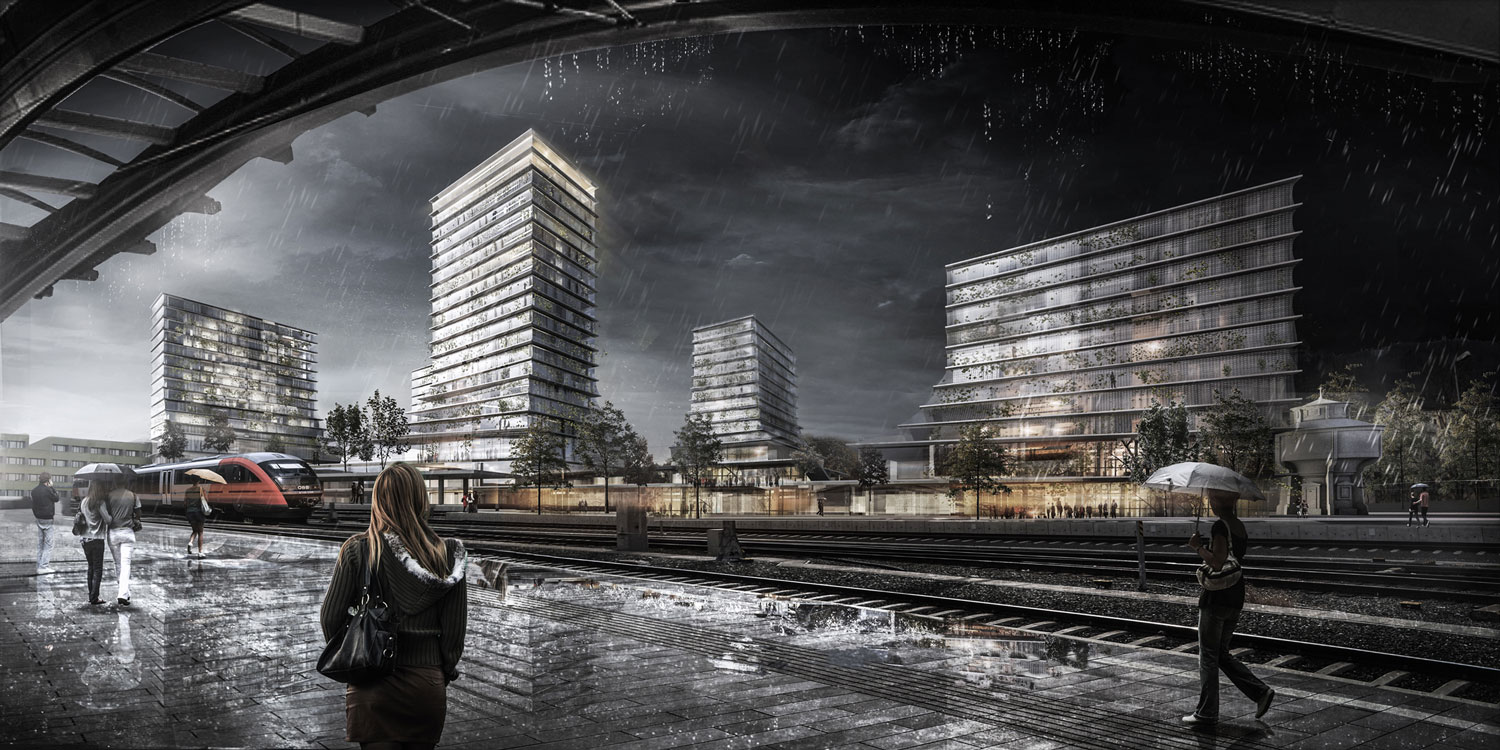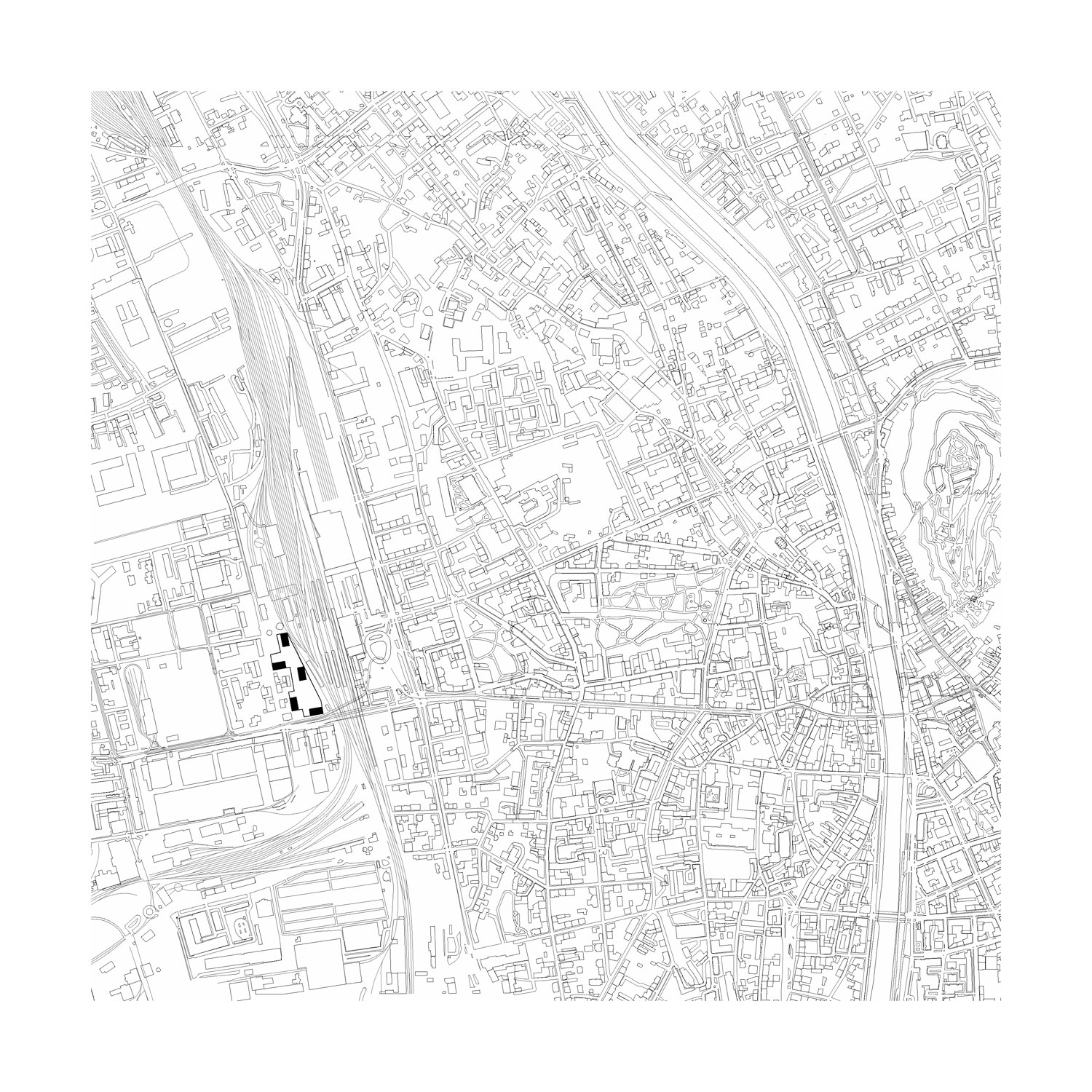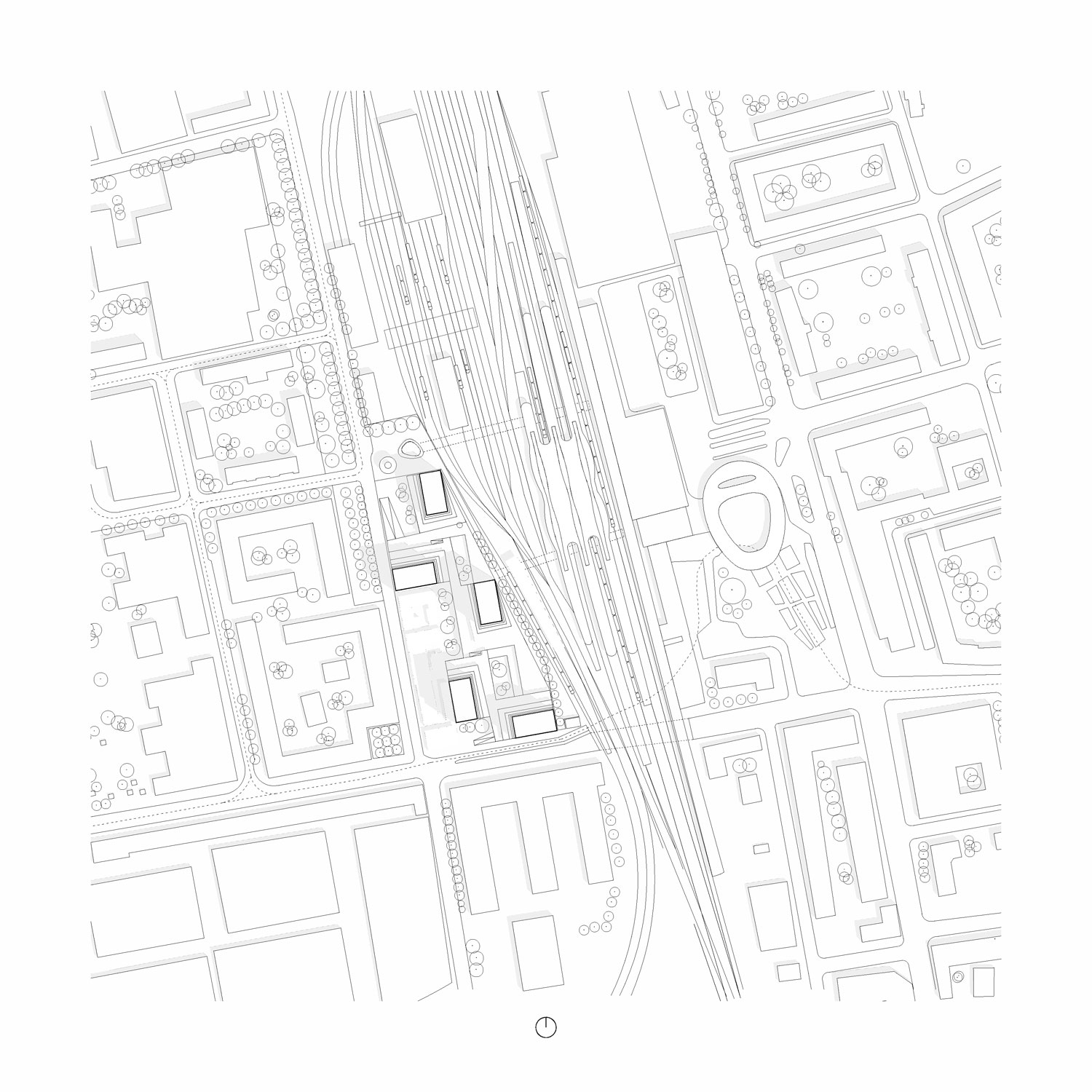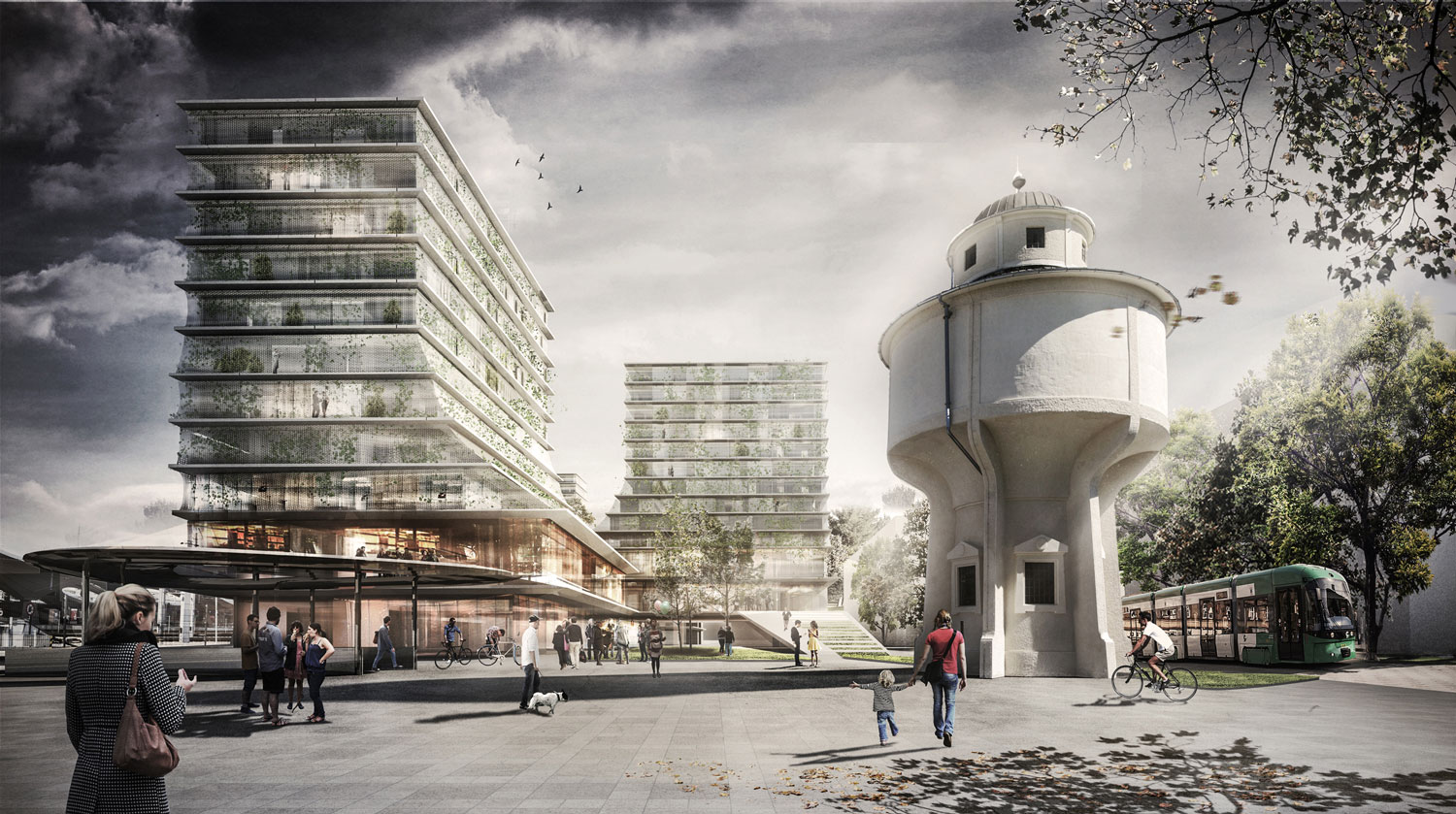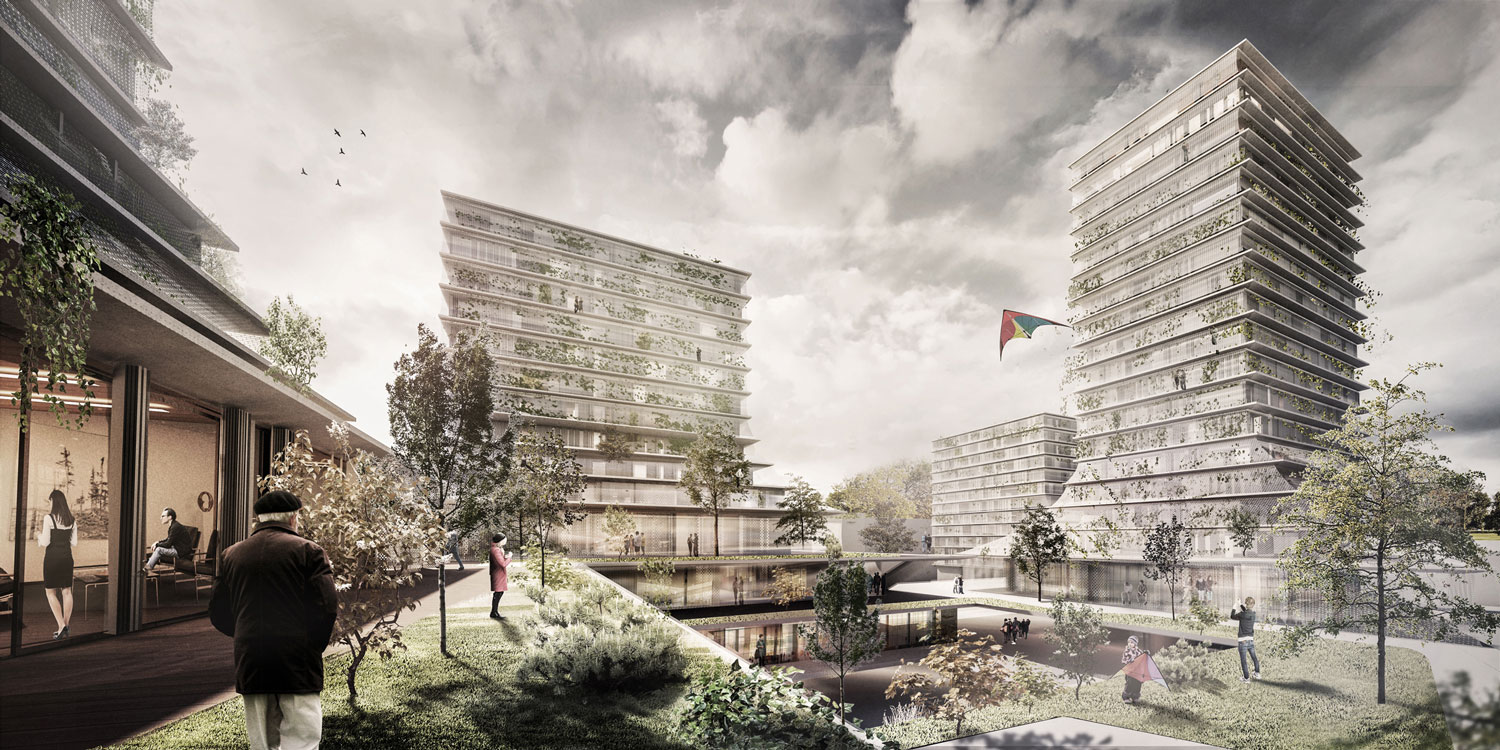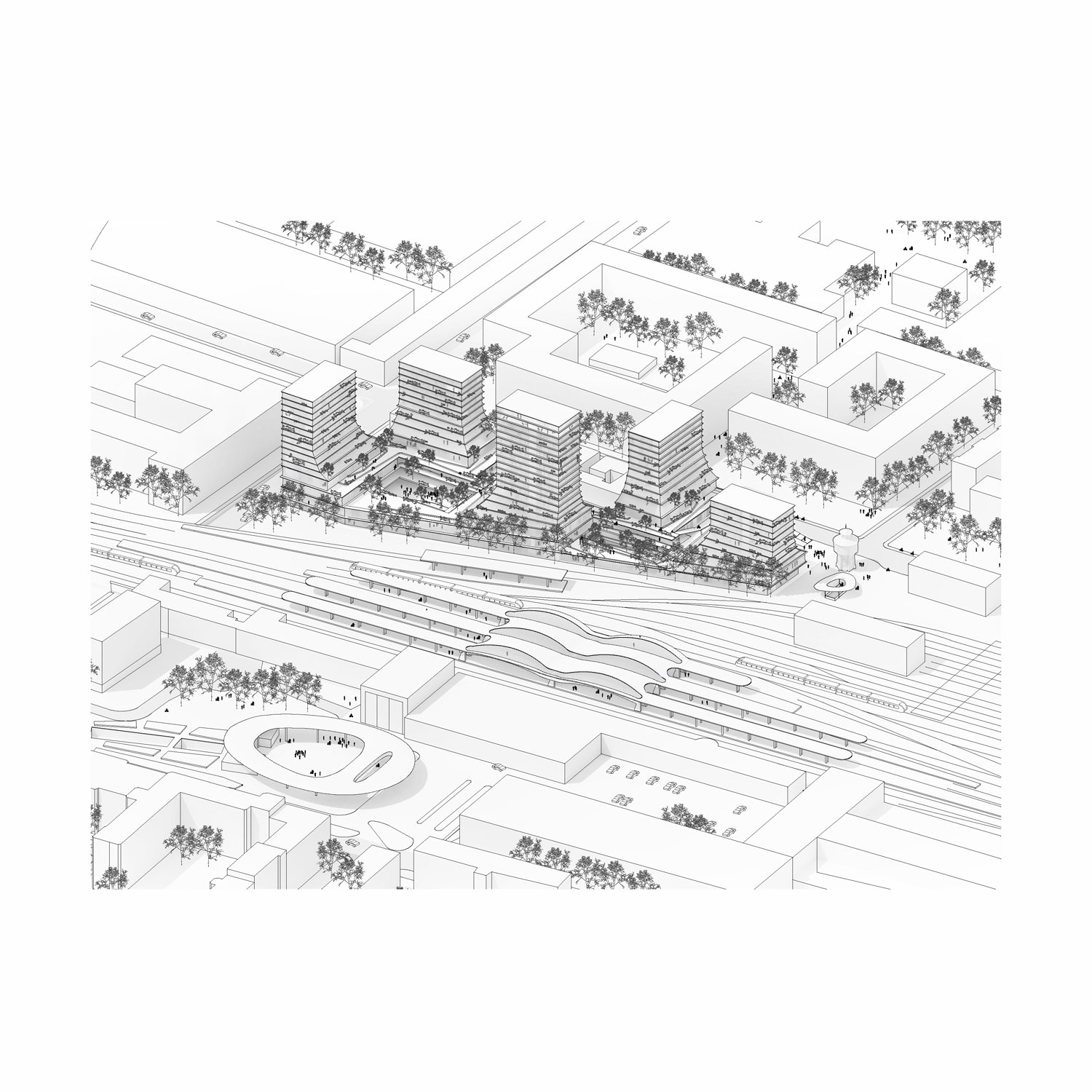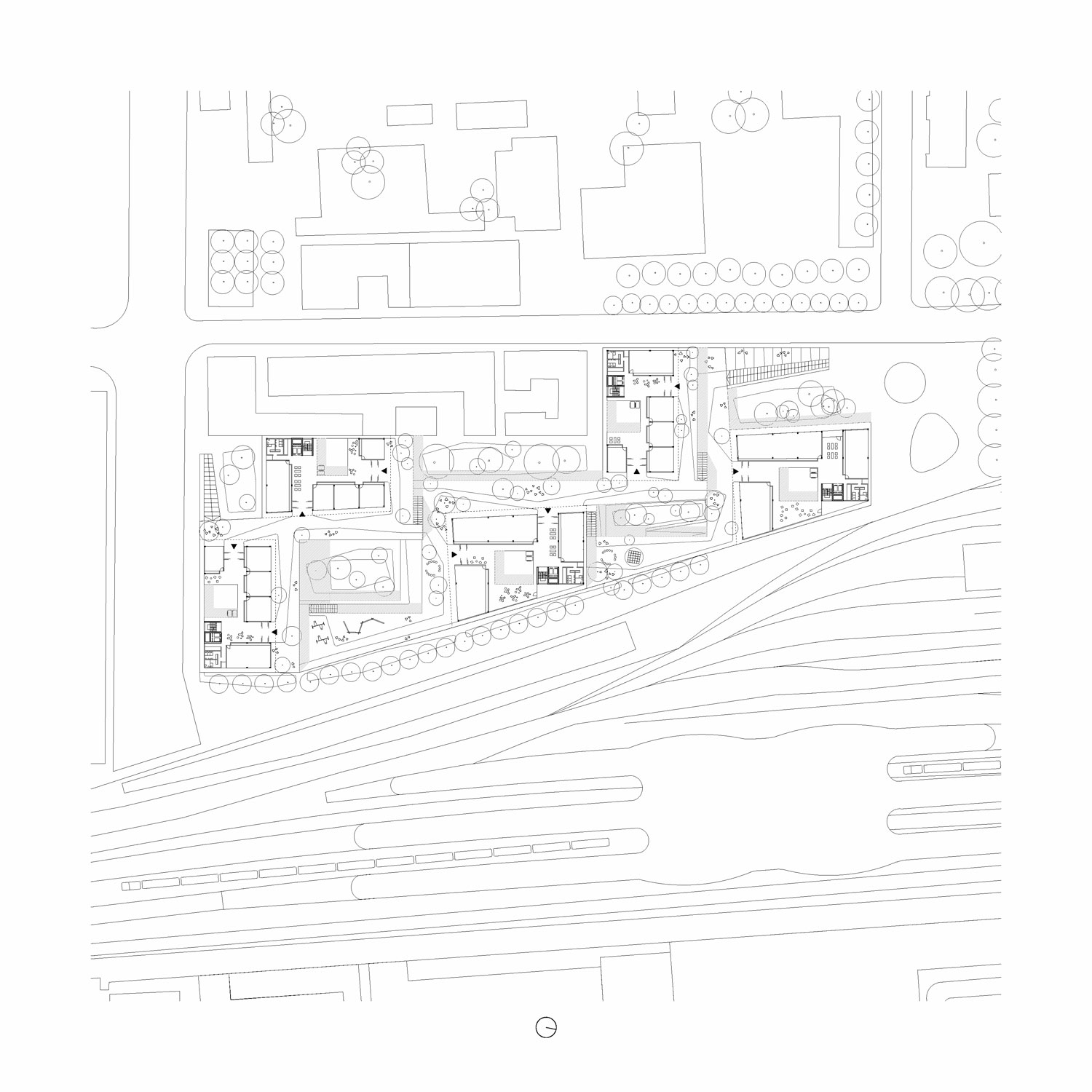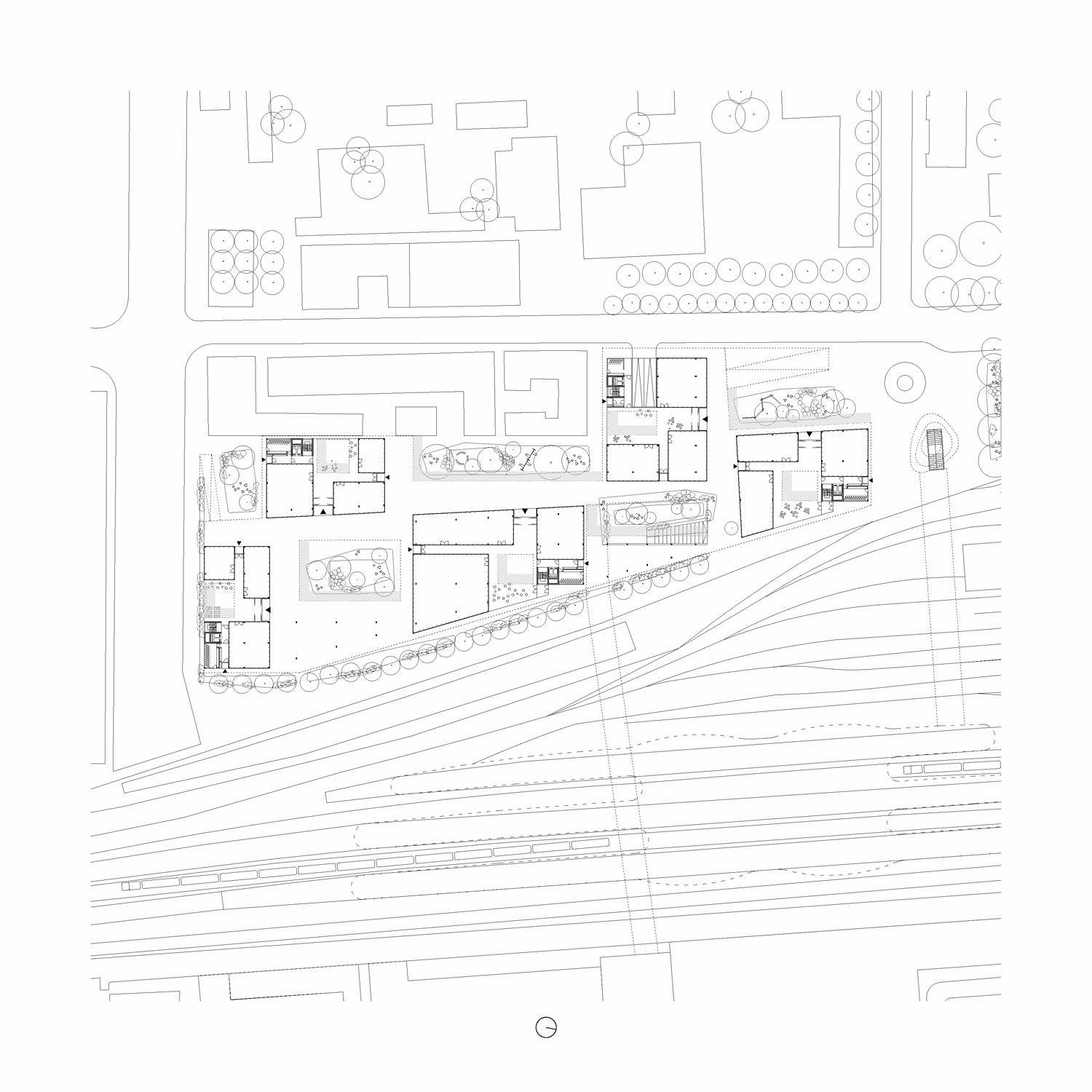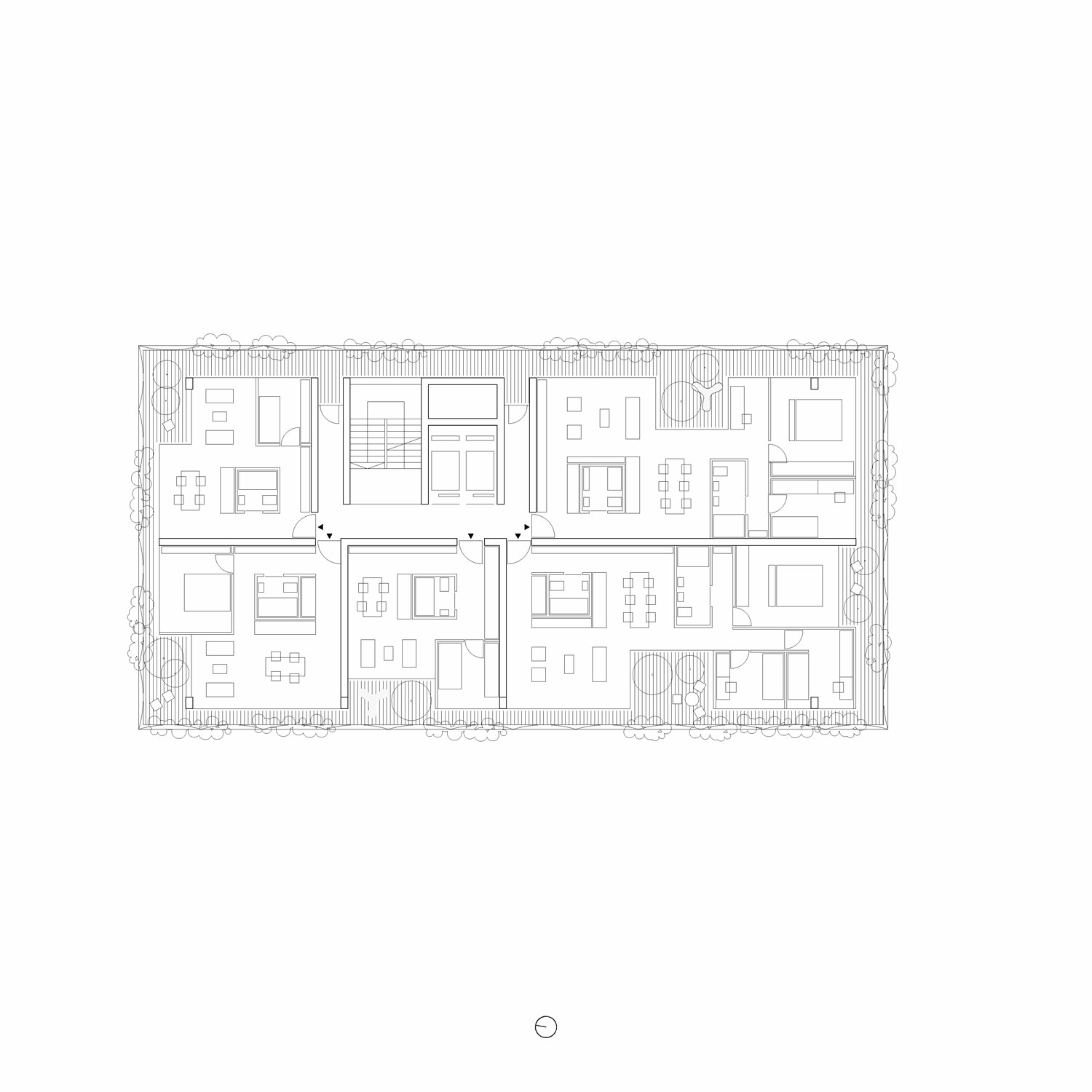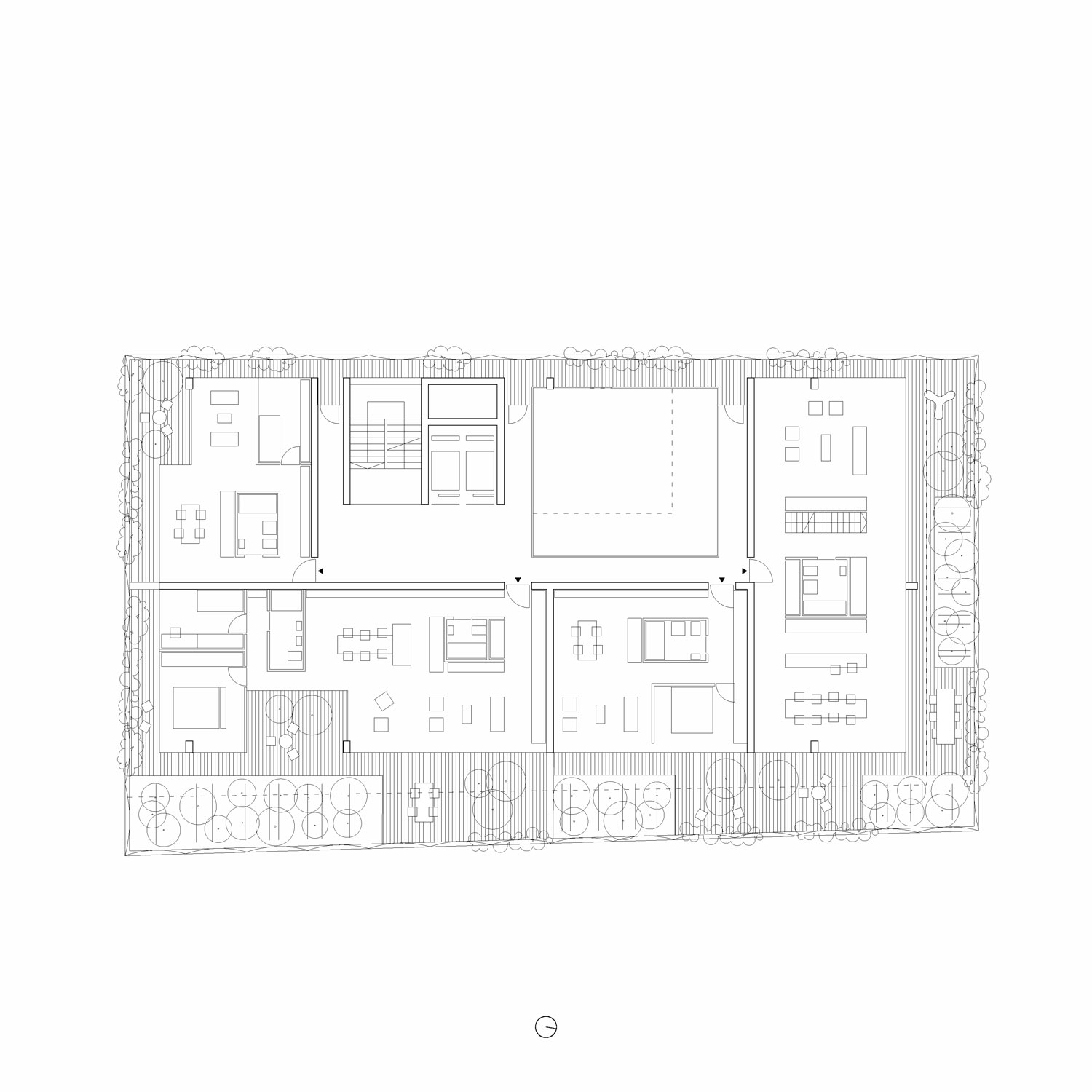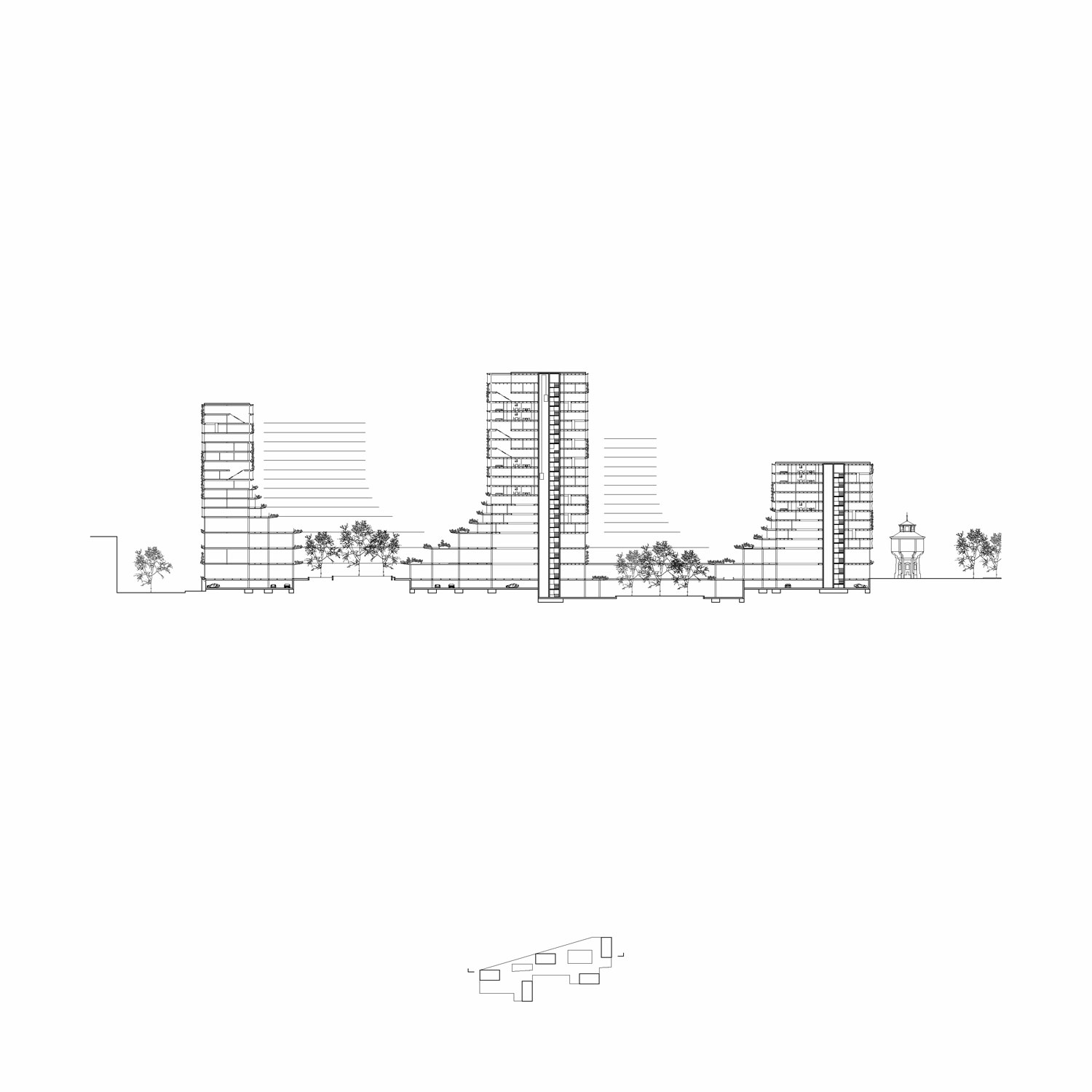☉ Europan 13 : Graz is a finalist competition entry by Elementarna for Europan in 2015. It is located in Graz Austria in a railway and urban setting. Its scale is extralarge. Review the 3 proposals for the same competition.
The city of Graz has been built along the river Mur in the northern part of a geological basin called Grazer Becken. Due to its topographic position, – surrounded by mountains on three sides, – city can only expand towards the south. Like many other cities, Graz has been defined by/has been formed by an inner-city migration towards its residential outskirts. Such process of suburbanization lead to well-known challenges: today, the city faces an extreme increase in commuter traffic, supply and waste management, a rise in the consumption of land and environmental resources, and an economically infeasible thinning out of infrastructures.
The aim of the proposed strategy is to reverse suburbanization and consumption of green areas by fostering inner-city housing projects. As an alternative to a suburban mode of living, it aims to provide high living standards in dense urban areas promoting the advantages of an urban life style. One of the most important guidelines was the idea of creating intervention that allows co-existence of a diverse range of privacies, providing urban public spaces that are accessible to passers-by while also allowing for spaces that can be appropriated by local residents that lend the area a local character.
One of the key advantages of a new design is a series of playgrounds and recreational areas in form of a green park. Park supplements the green stripes along Waagner-Biro-Straße and Daungasse, continues onto the new structure, and vertically connects public places underneath it and private spaces above it. It links the public and the private areas in quality spatial composition of open spaces. The new structure creates a silhouette that makes the Bahnhofsviertel visible from the east.
The silhouette highlights the new quarter as the modern pendant to the historic city centre and Schlossberg that characterize the view to the east and becomes a gateway to the new neighborhood of the ‘Bahnhofsviertel West’.
One of the main guidelines when designing the new structure was how to achieve maximum quality of life within as dense structure as possible. How can a new typology combine all the qualities of life in the suburbs and all the advantages of living in the city? One of the main advantages of the new design is large amount of open public and green spaces. These spaces are not tied only to the ground but are organized in all three dimensions and completely link the public program of the object. From this public conglomerate rise residential towers, which by its composition sensible supplement the skyline of the city and make a recognizable image that marks the new quarter as the modern pendant to the historic city center.
Height follows the silhouette of the city and respects the height of the Schlossberg and Uhrturm. The layout of the building also takes in consideration its microclimate and factors such as shadows generated through the shape of the buildings. Residential towers are placed in a composition that allows light to penetrate deep into the area and illuminate public spaces throughout the entire day. Interior of the towers is illuminated over big multiple height spaces that are opened to outside. On the lower floors, these spaces are oriented toward railway station so the apartments can be oriented away from the noise. On the higher floors, the problem of noise is solved by a buffer zone, which is located between the inner facade of the building, and a membrane-like green outer facade.
